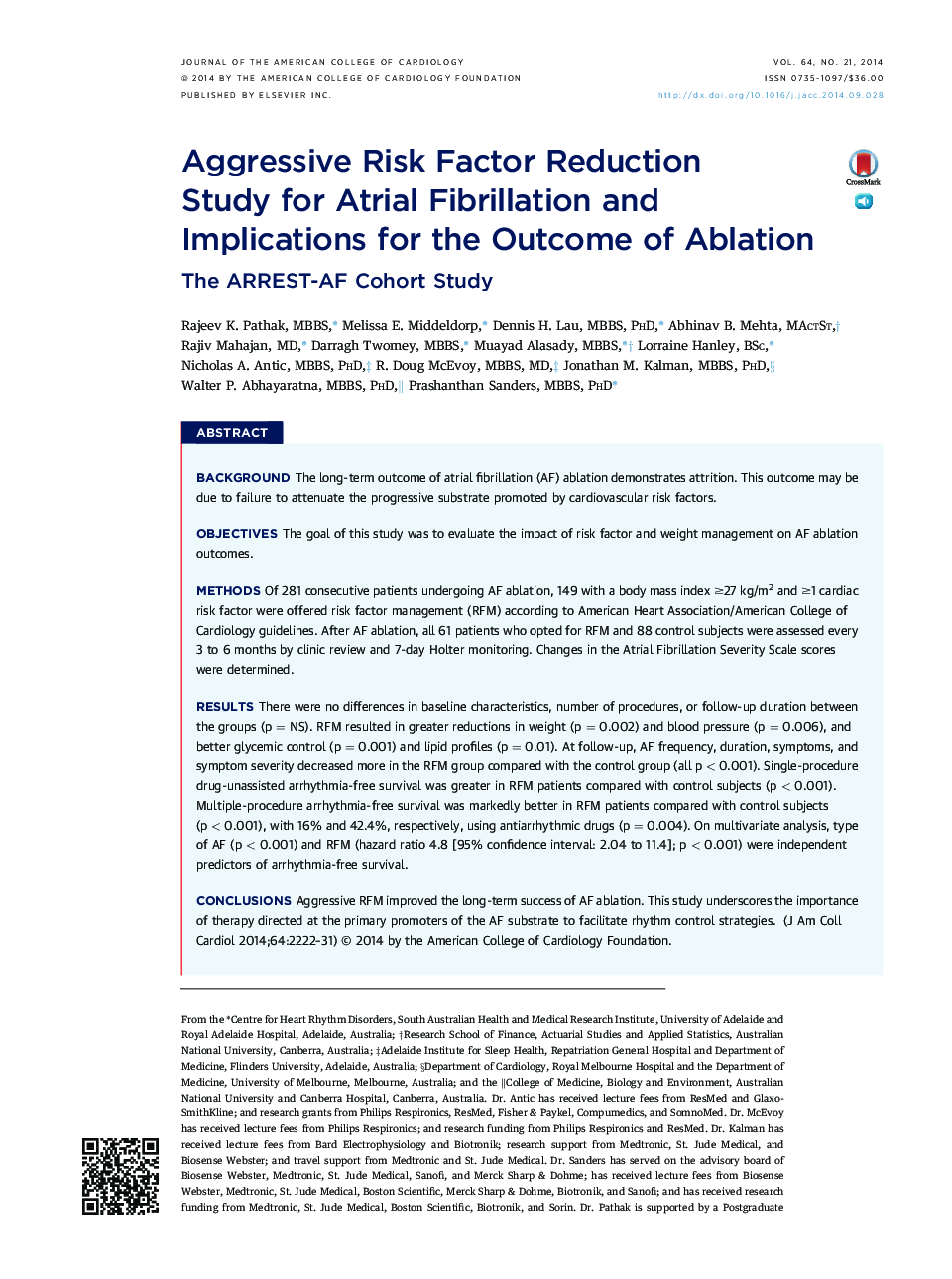| Article ID | Journal | Published Year | Pages | File Type |
|---|---|---|---|---|
| 2944156 | Journal of the American College of Cardiology | 2014 | 10 Pages |
BackgroundThe long-term outcome of atrial fibrillation (AF) ablation demonstrates attrition. This outcome may be due to failure to attenuate the progressive substrate promoted by cardiovascular risk factors.ObjectivesThe goal of this study was to evaluate the impact of risk factor and weight management on AF ablation outcomes.MethodsOf 281 consecutive patients undergoing AF ablation, 149 with a body mass index ≥27 kg/m2 and ≥1 cardiac risk factor were offered risk factor management (RFM) according to American Heart Association/American College of Cardiology guidelines. After AF ablation, all 61 patients who opted for RFM and 88 control subjects were assessed every 3 to 6 months by clinic review and 7-day Holter monitoring. Changes in the Atrial Fibrillation Severity Scale scores were determined.ResultsThere were no differences in baseline characteristics, number of procedures, or follow-up duration between the groups (p = NS). RFM resulted in greater reductions in weight (p = 0.002) and blood pressure (p = 0.006), and better glycemic control (p = 0.001) and lipid profiles (p = 0.01). At follow-up, AF frequency, duration, symptoms, and symptom severity decreased more in the RFM group compared with the control group (all p < 0.001). Single-procedure drug-unassisted arrhythmia-free survival was greater in RFM patients compared with control subjects (p < 0.001). Multiple-procedure arrhythmia-free survival was markedly better in RFM patients compared with control subjects (p < 0.001), with 16% and 42.4%, respectively, using antiarrhythmic drugs (p = 0.004). On multivariate analysis, type of AF (p < 0.001) and RFM (hazard ratio 4.8 [95% confidence interval: 2.04 to 11.4]; p < 0.001) were independent predictors of arrhythmia-free survival.ConclusionsAggressive RFM improved the long-term success of AF ablation. This study underscores the importance of therapy directed at the primary promoters of the AF substrate to facilitate rhythm control strategies.
